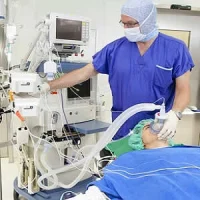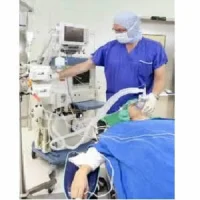Traumatic brain injury (TBI) patients frequently suffer from lung complications and acute respiratory distress syndrome (ARDS), which is associated with poor clinical outcomes. However, there are inadequate data addressing the safety or efficacy of ventilator strategies used in ARDS in adult patients with TBI, says an article published in Journal of Thoracic Disease. At present, the article notes, choice of ventilator rescue strategies is best decided on a case-by-case basis in conjunction with local expertise.
"Mechanical ventilation of patients with a concomitance of acute brain injury and lung injury can present significant challenges. Frequently, guidelines recommending management strategies for patients with traumatic brain injuries come into conflict with what is now considered best ventilator practice," the journal article explains. The report therefore explores the strategies of the best practice in the ventilatory management of patients with ARDS and TBI, concentrating on those areas in which a conflict exists.
What really matters to the brain after TBI is to avoid hypoxaemia, which has long been identified as a significant secondary insult following TBI and associated with poor outcome. Arterial oxygen partial pressure (PaO2) target can be efficiently directed on brain tissue oxygen tension (PbO2) or on jugular venous saturation (SjvO2 of <50%). When ARDS and TBI coexist, a balance needs to be found between CO2 control and lung protection. The article explains:
"Potentially, there are not absolute contraindications to the use of protective ventilation in TBI; the PaCO2 values should be set case by case according to ICP [intracranial pressure]. Moreover, multimodal brain monitoring such as microdialysis catheters or brain parenchymal oxygen electrode may allow intensivists to tolerate a higher PaCO2, if cerebral metabolism remains intact."
The use of positive end-expiratory pressure (PEEP) has been considered very controversial in TBI patients, because the raised mean intrathoracic pressure related to PEEP can reduce cerebral venous return and consequently increase ICP. Also, the optimal level of PEEP is still uncertain in ARDS patients.
"At present, therefore, the use of PEEP to treat ARDS may be appropriate in TBI patients, provided that MAP is maintained and a strict close attention needs to be paid to any changes in CPP [cerebral perfusion pressure] and ICP. When a decision of increasing PEEP in a TBI patient is made, it is necessary to ensure MAP stability and a close monitoring of cerebral parameters, mainly ICP and CPP," according to the article.
Prone ventilation is known to improve PaO2/FiO2 ratio in ARDS. In TBI patients however there are serious concerns over the effect on ICP of prone positioning and also technical difficulties can be present, such as risks of removal or displacements of ICP Bolt and drains and practical difficulties in positioning neuromonitoring. As the article points out, "there is no clear evidence to aid intensivists when deciding whether or not proning a patient when there is co-existence of ARDS and TBI; however, it doesn’t seem unreasonable to attempt prone ventilation when hypoxemia is refractory to conventional ventilation." In addition, the article says the effect of proning on ICP should be observed in real continuous time, with additional treatments for increased ICP or de-escalation to a different ventilatory strategy if ICP increases too much.
Extracorporeal membrane oxygenation (ECMO) is another technique used for "rescue" in ARDS in patients with TBI. Nowadays ECMO is feasible only in a limited number of centres. Despite the large number of complications associated with this treatment (bleeding, haemorrhage, acquired von-Willebrand disease during ECMO), the article says it should be considered as rescue therapy for management of refractory respiratory failure even in trauma patients.
In conclusion, the article says it would be "desiderable a concomitant cerebral and respiratory system monitoring in these patients, mainly in the more severe ones, in order to allow the best approach to these patients and avoid complications." In addition, further studies will be necessary to create shared diagnostic and therapeutic guidelines based on available evidence, which can help improve patients’ clinical outcome.
Source: Journal of Thoracic Disease
Image Credit: Pixabay
References:
Torre, Valentina D. et al. (2017) Acute respiratory distress syndrome in traumatic brain injury: how do we manage it? Journal of Thoracic Disease.
Latest Articles
ARDS, Traumatic brain injury, acute respiratory distress syndrome
Traumatic brain injury (TBI) patients frequently suffer from lung complications and acute respiratory distress syndrome (ARDS), which is associated with poor clinical outcomes. However, there are inadequate data addressing the safety or efficacy of venti










